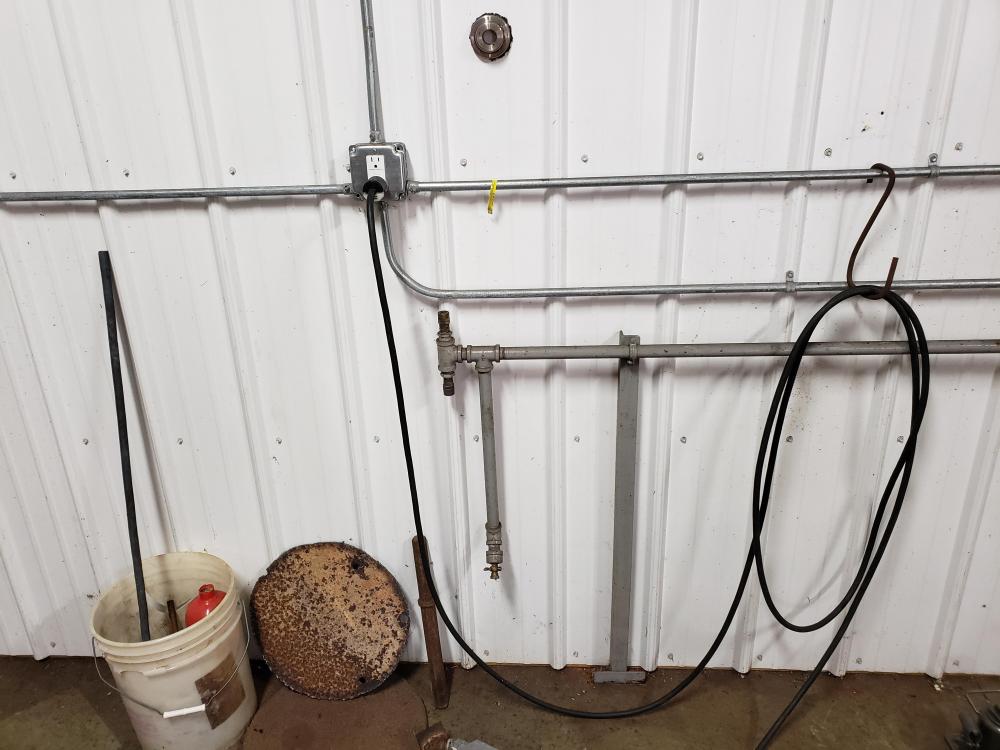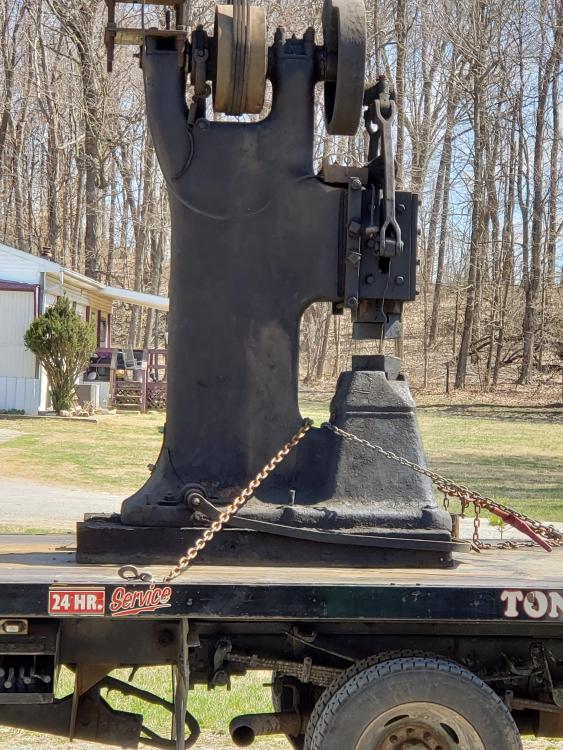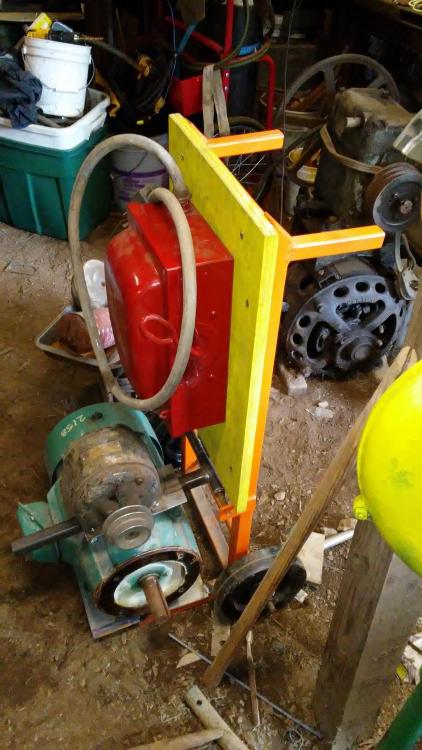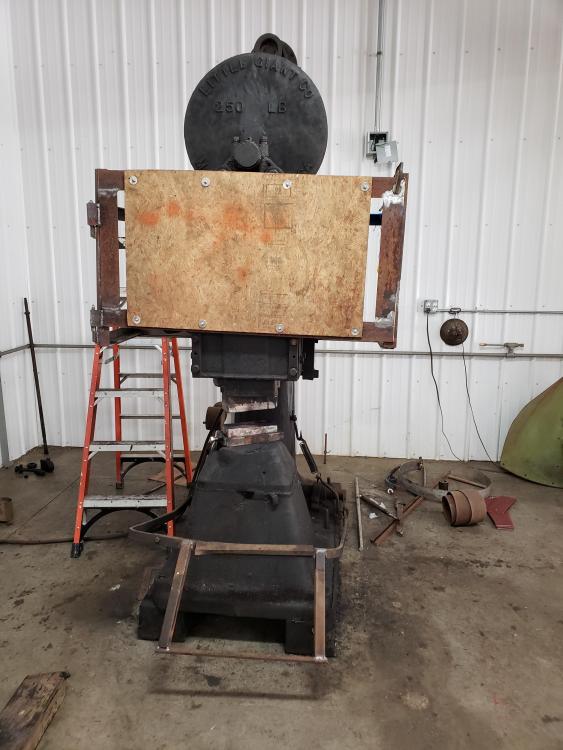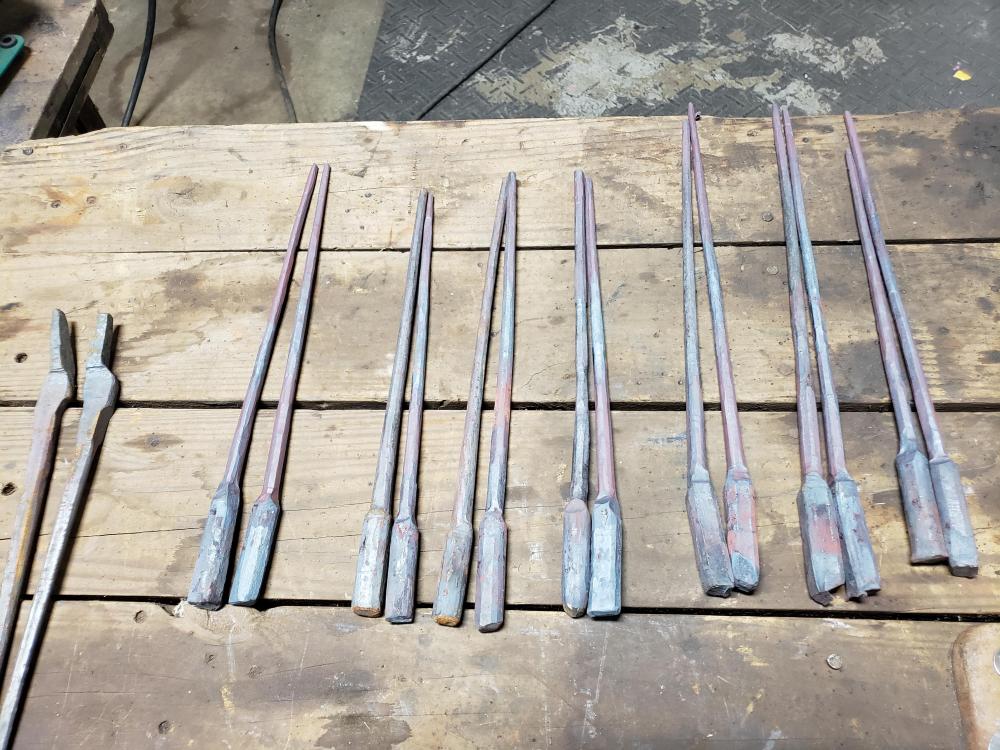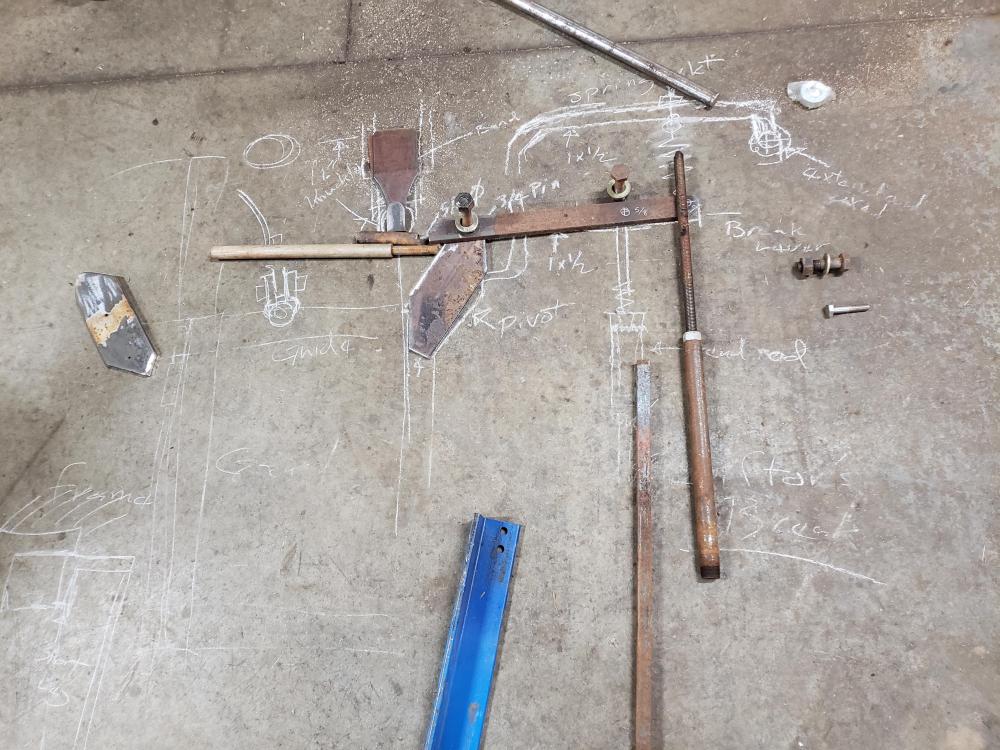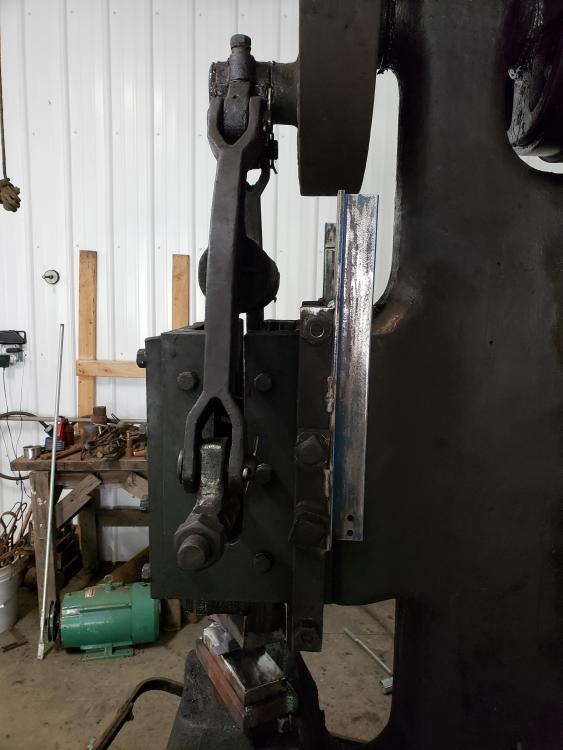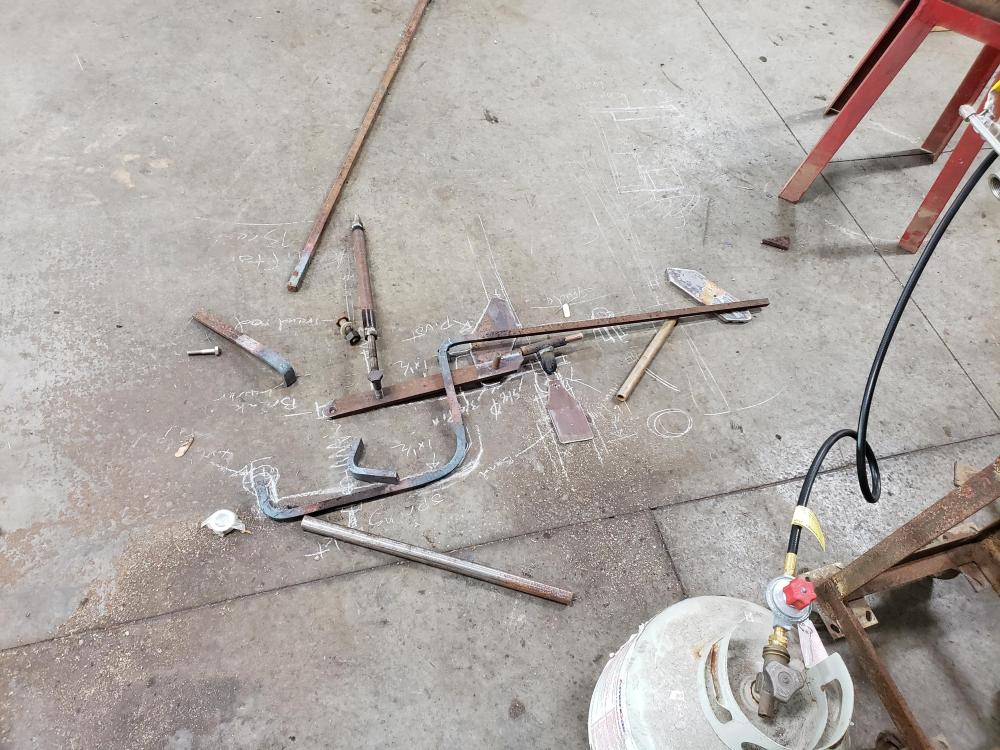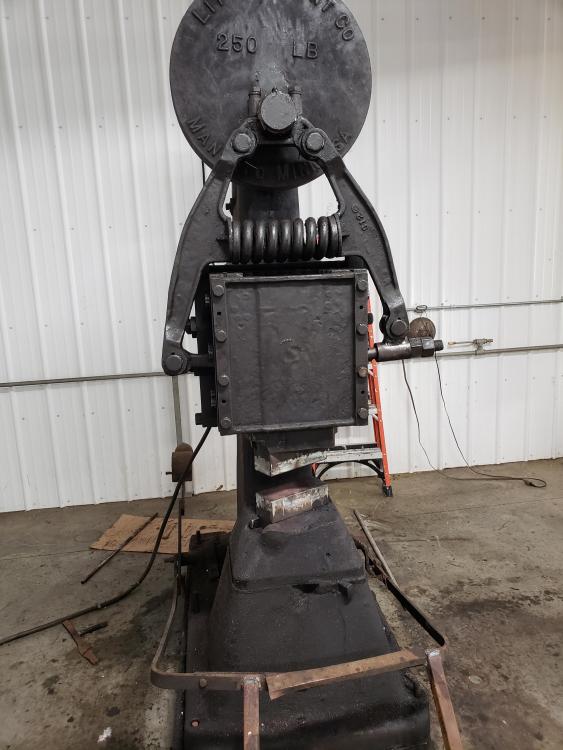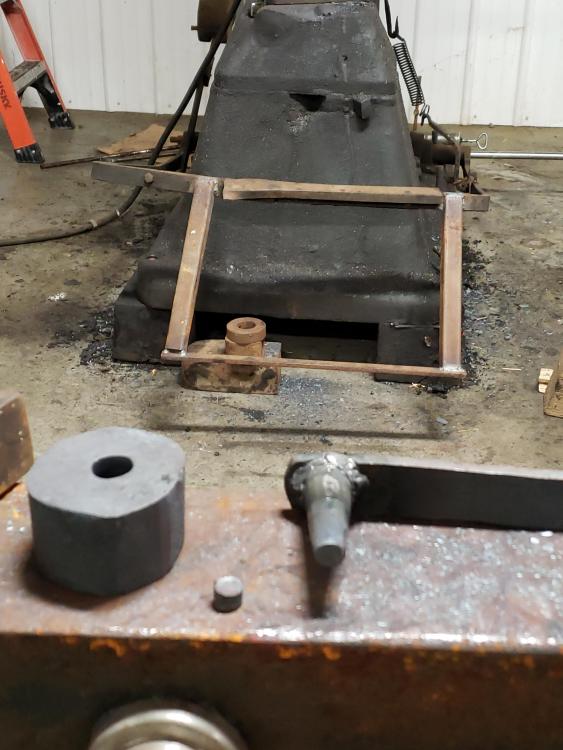-
Posts
469 -
Joined
-
Last visited
Content Type
Profiles
Forums
Articles
Gallery
Downloads
Events
Everything posted by jason0012
-
Oh, if anyone else is baffled by 12 inch duct- Maynards has it. At the moment on sale for $94 for 5-5 ft sections
-
In my new shop there is a crazy air manifold that goes everywhere. I have two air fittings every 4 feet through the whole building. For some reason the guy I bought the place from, removed the foot or so that connects to the air compressor ( but not the two compressors???) I do not have any air tools and so getting air up and running is pretty low priority. What I do need is propane supply to the three forges in my forging area. My propane supply line ends 15 feet from the forging area. My idea was to disconnect the air manifold on this side of the building and tie it in to the propane. The air line is 3/4inch black pipe 38 inches above the floor. I am unfamiliar with code on such things and was hoping someone here might know if this is legal. An issue is that my flue will pass just inches above this pipe ( for the coal forge). My easy solution would be to drop the pipe to the floor, but it occurred to me that it may be preferred to run outside the wall.
-

old style 250 pound little giant
jason0012 replied to jason0012's topic in Power Hammers, Treadle Hammers, Olivers
Did it load? My browser just shows a black screen with a spinning arrow like it didnt load. -

old style 250 pound little giant
jason0012 replied to jason0012's topic in Power Hammers, Treadle Hammers, Olivers
Had some of the local smiths over last night and Steve King drew a few pieces of two inch stock for some nails to be headed at a public demo. The 250 made really quick work of it. -

old style 250 pound little giant
jason0012 replied to jason0012's topic in Power Hammers, Treadle Hammers, Olivers
I learned something new about the clutch on my hammer today. First heat of the day had me in a panic that the hammer just would not run. Clutch was tuning and trying, but failing to catch the hammer. I had oiled the hell out of it like I always thought you supposed too. It turns out, these oddball lined clutches dont like oil. After cleaning it off it is back to running. Not a good start to the day though -
I am in the process of upping my shops tong collection, which has dwindled the last few years. I use spring steel for tongs, but getting frustrated with recycling for them recently looked up new stock from Alro. To be fair, I have never bought 3/4 inch round 4140 new before but the price I was quoted was about 10 times what I expected. I mentioned this to another Smith, who suggested re bar. Now I had an initial unpleasant response to this suggestion which long story short resulted in me at home with a formidable peice of rebar in the forge. I did a hardness test and found that it was rendered glass hard in a water quench. What really baffles me is the papers all have it listed as a pretty crappy steel. .30% carbon is its max, but I get heat treat results like 5160???? What is up with this? An oddball run of concrete bar or am I missing something?
-

Hauling a hammer a LONG way
jason0012 replied to RKM556's topic in Power Hammers, Treadle Hammers, Olivers
My 250 moved twice standing up. It was the choice of pros moving it to do so. Now, I only hauled it around 22 miles, but that should not be an issue with stability. Beware, mine scaled over 7000 and I dont think that is uncommon. Best of luck with the move, awsome machine, you will enjoy it. -
If it is just for the beaudry, and you dont have a motor, just find a single phase 10 hp. A 1p should be ok. My experience with converters has been mixed. I built three in my shop with no problems or complaints. At work, we use a mix of static converters ( will make you wish you had shelled out for a single phase motor) and vfd drives. Vfds cost about the same as a magnetic starter and probably the most reliable off the shelf solution. An air hammer like a beche or nazel has a full load at starting which seems to cause issues with some converters. I always sized my rotary converters 1 to 1 to the driven motor without issue. The one in the picture is a 7.5 hp I put together for the 250.
-

old style 250 pound little giant
jason0012 replied to jason0012's topic in Power Hammers, Treadle Hammers, Olivers
In the future I can see replacing the door with an old fire screen that has been hanging around for far too long. I like the idea of hinging in the middle. The gaurd has to be opened to lube the hammer so I do get up close with it a couple times a day- at its age the spring isn't the only part I am watching for failure. I have seen far more failures in little giant arms than springs. Of the dozen or so spring incidents I have witnessed probably 2/3 left the spring intact. I was 30 feet away from a 100 pound that threw its spring once. I think it hit three walls and the ceiling before it came to rest. The scale of these parts leaves me preferring to have them in a cage. Most of my break parts are ready, I will likely try to get them together next week. I am getting more comfortable with this hammer. Forging some h-13 this morning and really appreciating that extra push it has. -

Air hammer foundation
jason0012 replied to Cast and Forge's topic in Power Hammers, Treadle Hammers, Olivers
A hammer that small shouldn't be much of an issue. Go wide rather than deep. One foot deep by four feet square ought to be more than enough. If you have a concrete floor a wood pad and anchors into the floor would be enough. A wooden pad would likely be adequate. Those little hammers usually need the foundation to get them to a good working height rather than to absorb impact. A 16 kg is pretty small and air hammers dont wobble and bounce as much as mechanical hammers. -

old style 250 pound little giant
jason0012 replied to jason0012's topic in Power Hammers, Treadle Hammers, Olivers
Finally got a front on the hammers gaurd. I still have some work to do on the break and need a latch on the gaurd door, but feel much better with the arms and spring covered( even if they are fun to watch) -

old style 250 pound little giant
jason0012 replied to jason0012's topic in Power Hammers, Treadle Hammers, Olivers
I had the Indiana blacksmiths over Saturday, and was talked into doing some forging on the 250. Low end control is not the best and it is a tad hairy when things get down to 3/8-5/16. I am getting more comfortable with it though rounding is still awful slow. I came out with about 7 pairs of tong blanks. It does eat up that 3/4 round. -
My grandfather was an insurance agent. I pestered him for years about getting insurance, but he was tremendously evasive, and gave the impression that I was un insurable.
-
I have been considering offering some classes at my shop. I am concerned about the potential issues that could arise from inviting the untrained public into a place as hazardous as a blacksmith shop. So for those of you that teach, what sort of insurance do you carry to cover the unforeseen? Am I just being paranoid?
-

old style 250 pound little giant
jason0012 replied to jason0012's topic in Power Hammers, Treadle Hammers, Olivers
Clifton's break seemed overly complicated to me, until I started looking for ponts to attach a spring. It makes sense now. I got the posts on the hammer today. Just a bit of assembly to go. -
Probably meant to be feet, tabs, or shims under feet. ASTM codes are a pia but it looks pretty near 4130 from what I see. All the sites I found on Google want like $80 for a composition break down and I am not that curious. I could go look it up, but I am in for the night and dont feel like hiking back to the shop to look it up. If you dont have a composition by morning I will find it for you. Alloy aside, it really shouldn't matter. For an anvil you just need the mass. I would put them together with some big dowel pins then drill and tap the sides for threaded clamps and not bother with welding. That or use them as is for anvils and fond something else for a power hammer
-

How big of a hammer
jason0012 replied to Millennial Blacksmith's topic in Power Hammers, Treadle Hammers, Olivers
As for making axes, the bigger hammer will have more stroke/daylight. That is precisely what is needed for operations like punching and drifting eyes. -

old style 250 pound little giant
jason0012 replied to jason0012's topic in Power Hammers, Treadle Hammers, Olivers
I made a new knuckle, and replaced the t bolt. I still need to do the other side but the old one was kind of iffy. It was a 1 1/2 inch wrought iron bolt, cleft welded to a 1 1/4 steel pin. The pin was worn quite badly. The new arm would not seat correctly in the ram. I found a ridge of nearly 1/4 inch raised in the seat holding the arm out. After some grinding it is where it should be and looking better... -

There’s a 350# power hammer being sold
jason0012 replied to Farmall's topic in Power Hammers, Treadle Hammers, Olivers
How do they always loose the anvil?????? -
Welding the eye is faster and easier. It allows a better bearing and is quite strong enoigh- Clay has built a LOT of these. To my memory, nothing was heat trested short of normalizing the spring eyes after welding, but it has been nearly 20 years so something may have slipped my memory. I am pretty sure I just used cold rolled for the arm axels.
-

old style 250 pound little giant
jason0012 replied to jason0012's topic in Power Hammers, Treadle Hammers, Olivers
I got this hammer because the Bradley just doesn't seem to like punching holes. It is great for everything else, but it's short stroke and soft first blow just dont make for good results with tall tools. So today I punched the first hole on the 250. I definately need to upgrade all my tooling. My tongs aren't the right size, I dont have punches or drifts really, and seem to have lost at least half of my power hammer tools somewhere on my journeys... -

Little Giant 25# Trip Hammer
jason0012 replied to MDDstudios's topic in Power Hammers, Treadle Hammers, Olivers
A 25 will work the same steel you can work by hand. It will move the work from your arm to a motor, which is a big improvement. A huge advantage, is nearly all parts are available from the company, and all work on these little hammers is pretty easy. A 25 is easy to move and install and will run on a 110 volt light circut if you dont have a lot of power available. Prices vary a lot, but an equivalent little Anyang air hammer runs around $5k so keep that in mind.- 4 replies
-
- 25lb
- trip hammer
-
(and 1 more)
Tagged with:
-

damascus steel gun barrels
jason0012 replied to KINGFISH's topic in Gunsmithing, Muskets, Flintlocks etc
I know of a few Smith's who have built modern barrels for modern cartridges. The process is to wrap a pattern welded skin over a 4140 core and weld solid, then drill like a modern barrel. The Damascus is purely decorative and has no real effect on the barrel. Damascus barrels fell out of common use when powders started generating higher pressures, steel got better and finally, high pressure rifle rounds came into use. The cost/safety issue was the end of them. Black powder in a traditional muzzle loader would represent a technology that Damascus has the capability to function with, but I dont think a straight up Damascus barrel could handle the 50,000+ cup most modern barrels are subjected to. -

old style 250 pound little giant
jason0012 replied to jason0012's topic in Power Hammers, Treadle Hammers, Olivers
I have run rotary converters over the years a 3 originally, replaced with a 10, then traded off with the last of my 3 phase equipment, and more recently replaced with a 7.5. They are really easy and cheap to build, and way more reasonable than the $100,000+ that LG&E wanted to power up my shed.

